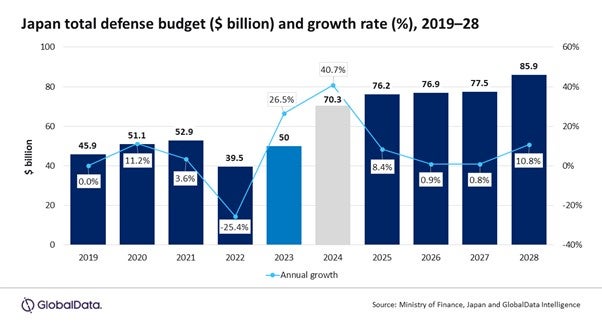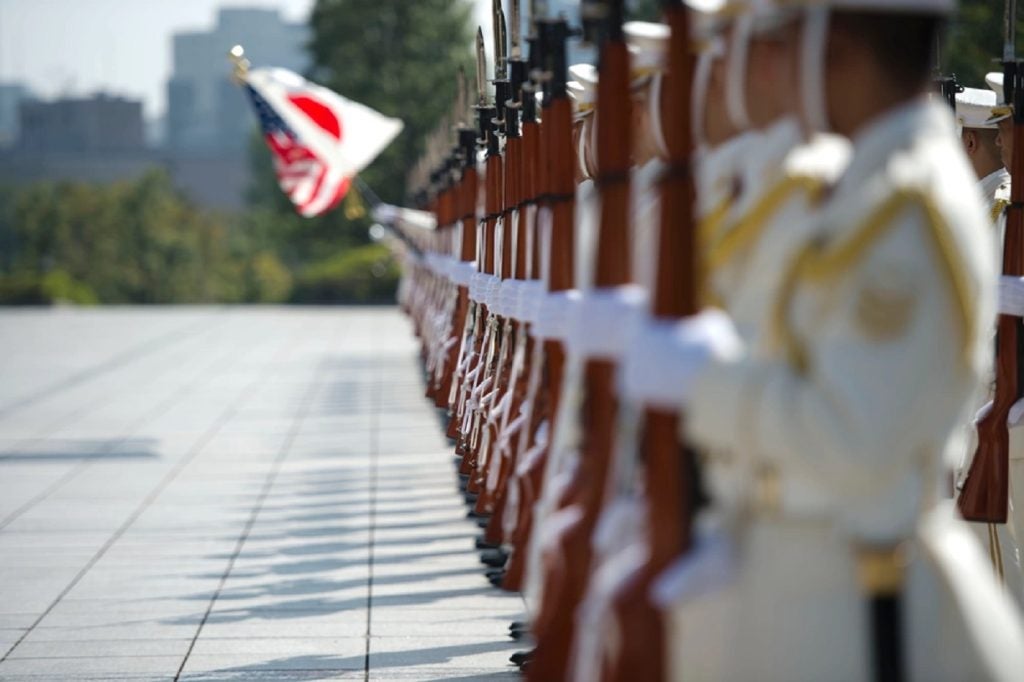As regional tensions escalate due to North Korea's nuclear ambitions and China's assertive actions, Japan takes proactive measures to fortify its defence capabilities.
In response to mounting security challenges posed by its neighbouring countries, Japan has significantly ramped up its defence expenditure by 26.5% in 2023, according to a recent report from GlobalData, a leading data and analytics company. With a focus on enhancing air and naval strength, the island nation's defence modernisation efforts indicate a commitment to regional security.
Strategic defence investments in response to regional instabilities
To address the evolving security landscape in the Indo-Pacific region, Japan's defence expenditure has surged from $39.5bn in 2022 to an impressive $50bn in 2023. This growth signifies Japan's dedication to strengthening its defence posture and safeguarding its national interests amidst growing concerns.
GlobalData's comprehensive report, "Japan Defense Market Size and Trends, Budget Allocation, Regulations, Key Acquisitions, Competitive Landscape and Forecast, 2023-28," underscores their commitment to bolster its defence capabilities.
The report predicts a steady increase in defence acquisition expenditure, reaching $53.8bn by 2028, with a compounded annual growth rate of 5.9% from 2023-28.

Japan's commitment to defence modernisation
Japan's resolute stance on enhancing its defence capabilities is further evidenced by the government's allocation of an additional supplementary budget of $6.3bn in 2023. This dedicated fund, exclusively earmarked for defence modernisation programmes, reaffirms their proactive approach to meet regional security challenges head-on.
The increase in defence expenditure has facilitated advancements in Japan's defence capabilities. A pivotal aspect of this modernisation is the country's investment in military fixed-wing aircraft, followed closely by naval vessels, missiles, and missile defence systems.
F-35 fighter jets and collaborative initiatives for Japan
One of the standout defence initiatives includes the procurement of F-35 fighter jets. The Japanese Ministry of Defense (MoD) has increased its order from 42 to 147 F-35 fighter jets to bolster its multi-role air capabilities.
This strategic move and collaborative efforts with Italy and the UK to develop a sixth-generation fighter aircraft reinforce Japan's determination to maintain a robust defence presence.
Rouble, Aerospace & Defence Analyst at GlobalData, emphasises the significance of Japan's aerial fleet: "Japan's aerial fleet plays a crucial role in protecting its national security interests and responding quickly to emergencies. The acquisition of additional F-35B fighter jets will strengthen Japan's deterrence posture and contribute to security in the Indo-Pacific region."
Advancements in naval capabilities
Beyond focusing on air defence, Japan has also been committed to upgrading its naval capabilities. This commitment is exemplified by the Defense Buildup Program announced by the Japanese MoD in 2022. The programme aims to replace outdated destroyers and escorts with advanced frigates, such as the Mogami class, and to develop a new type of multi-mission stealth frigates and attack submarines.
Japan's resolute efforts to modernise its defence capabilities reflect a forward-looking strategy to address complex regional challenges. As tensions continue to rise, Japan's commitment to enhancing its defence posture and strengthening partnerships with key allies solidifies its role in maintaining peace and stability in the Indo-Pacific region.











